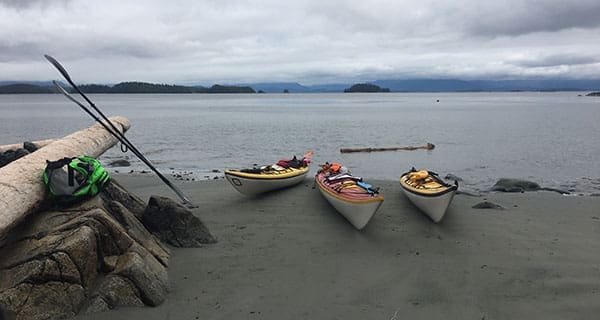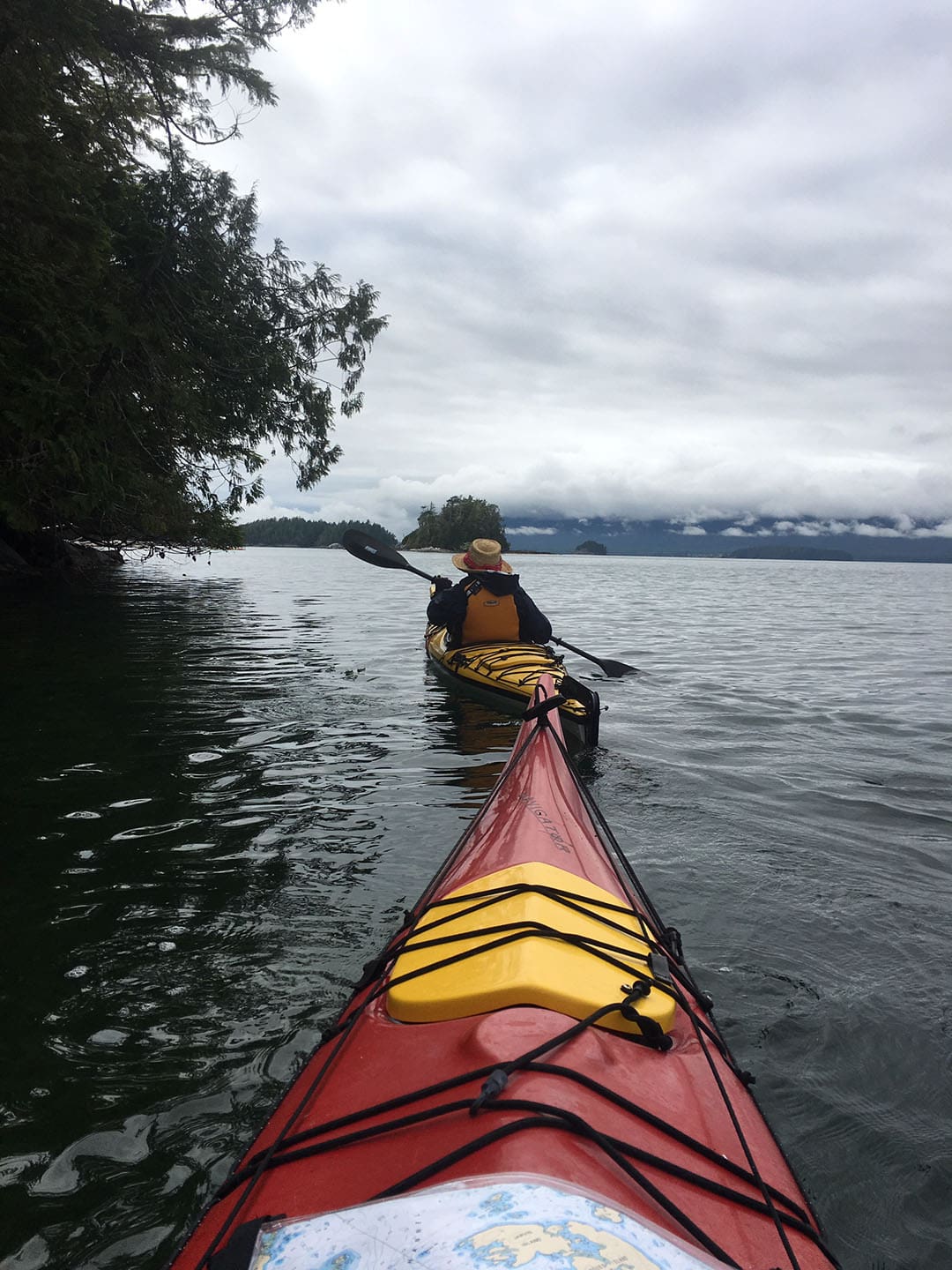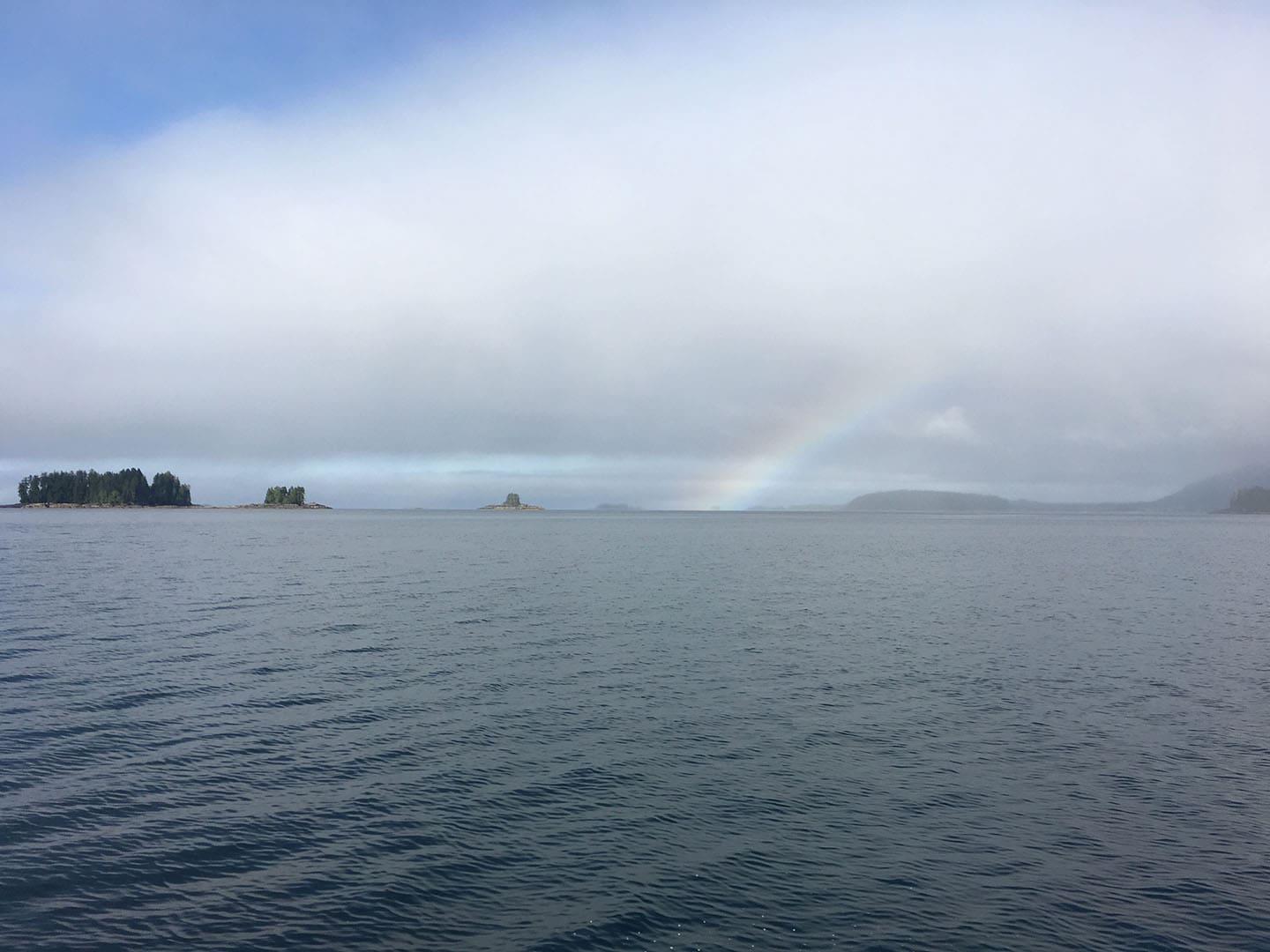 It’s the classic ocean kayaker’s dilemma: should I wait or go now?
It’s the classic ocean kayaker’s dilemma: should I wait or go now?
You’re all loaded up. It’s probably early in the morning and you don’t want to delay others as your trip unfolds before you.
Some or all of your trip-mates may have taken kayak water rescue courses and have at least some confidence in their abilities to re-enter a rolled and loaded kayak. You may have all the latest gear: coiled ropes for sliding over the bow or stern and climbing onto the deck, paddle floats for creating instant outriggers, even a practised ability (with a spray skirt attached) to perform an ‘Eskimo roll.’
All the same, a five-km (or greater) open inlet crossing creates a persistent dilemma: to go or not to go – that’s always the question.
I can still vividly remember my first big crossing – from Cumshewa Head to Skedans Point in Haida Gwaii, due south across the wide mouth of Cumshewa Inlet, early one July 1978 morning.
My wife and I were beginning the second day of our first big kayak trip: two weeks of paddling in Gwaii Haanas, just the two of us. We saw no one else on that trip. Not even a fish boat or a sail on the horizon.
That July morning 41 years ago, we idled our kayaks in a kelp bed just off the rocks at Cumshewa Head. It was about 9 a.m. A slight northwest wind was just picking up behind us and a falling tide had begun.
Looking out across the inlet, I remember that the trees on Skedans Point were indistinct. They formed a mass of dark green against a blue sky.
The inlet was still but formidable because of its breadth.
I looked down at my paddle and summoned up the strength to begin.
“Now or never,” I reasoned. And then I looked up and realized that my wife had already pushed off and was out in front of me by 100 metres! She had made the choice for me. I began my measured paddling for what seemed forever – or at least 30 minutes.
I glanced at my watch every so often and looked continuously at Skedans Point, dead off my bow. I was keeping up with my partner, but together we seemed stuck in a no-progress gyre of fate. Strangely, nothing seemed to be getting any closer.
I reasoned that we must be at least two km into the five-km crossing, and resolved to try to fix my eyes on a blurry tree top – ideally the canopy of an enormous sitka spruce. I identified the tallest tree on my southern horizon and started to obsess on it. Slowly, slowly, slowly it began to grow more distinct as I paddled. Almost unbelievably, it seemed to be getting closer.
Kindly, the wind didn’t pick up and the tide’s southern pull helped us along. After about an hour, we were nearly there. And then we were.
That night, we camped in the abandoned Skedans village and dreamed of inlets.
Ever since, I’ve been fascinated by long crossings. I’ve made it a practice to quiz local experts wherever possible and I’m constantly open to new input.
Perhaps the most direct advice I’ve received came from Mowachaht elder Ray Williams, who’s known as the Protector of Yuquot (his home village) in Nootka Sound, on Vancouver Island’s west coast.
Ray and I have known each other for nearly 50 years and we share the same sense of trip-planning humour. I asked him recently to summarize his nearly eight decades of experience as a fisherman, coastal pilot and guide with respect to inlet crossings.
Ray’s concise advice: “Go early, Michael.”
All of this is in my mind as I’ve just returned from five days of kayaking with old pals in the Broken Group, about 100 km south of Ray’s Mowachaht territory.
Our party of four made numerous crossings on this trip, as we once again paddled as a seasoned team. We carefully planned each departure and arrival location democratically, we went early and we stayed together.
Mostly the wind and tide were at our backs.
I found myself smiling as I concentrated on strong paddle strokes during our first crossing from Willis Island to Turret Island. Long crossings have become fun!
Troy Media columnist Mike Robinson has been CEO of three Canadian NGOs: the Arctic Institute of North America, the Glenbow Museum and the Bill Reid Gallery.
The views, opinions and positions expressed by columnists and contributors are the author’s alone. They do not inherently or expressly reflect the views, opinions and/or positions of our publication.




